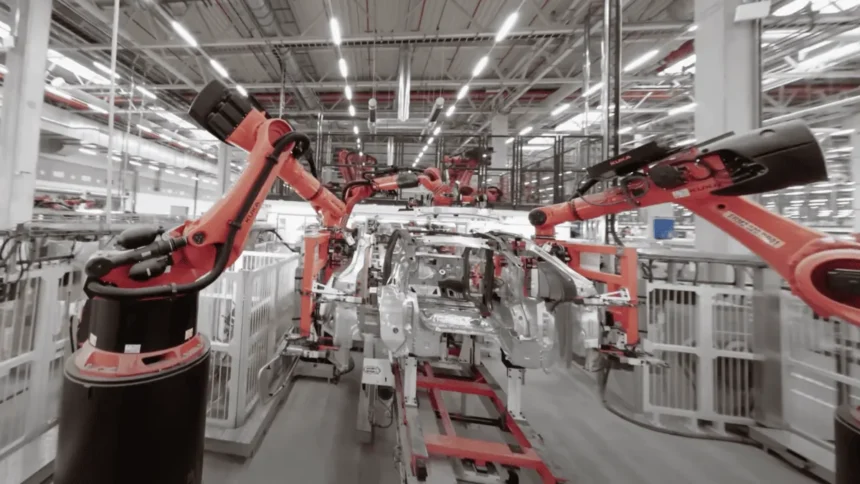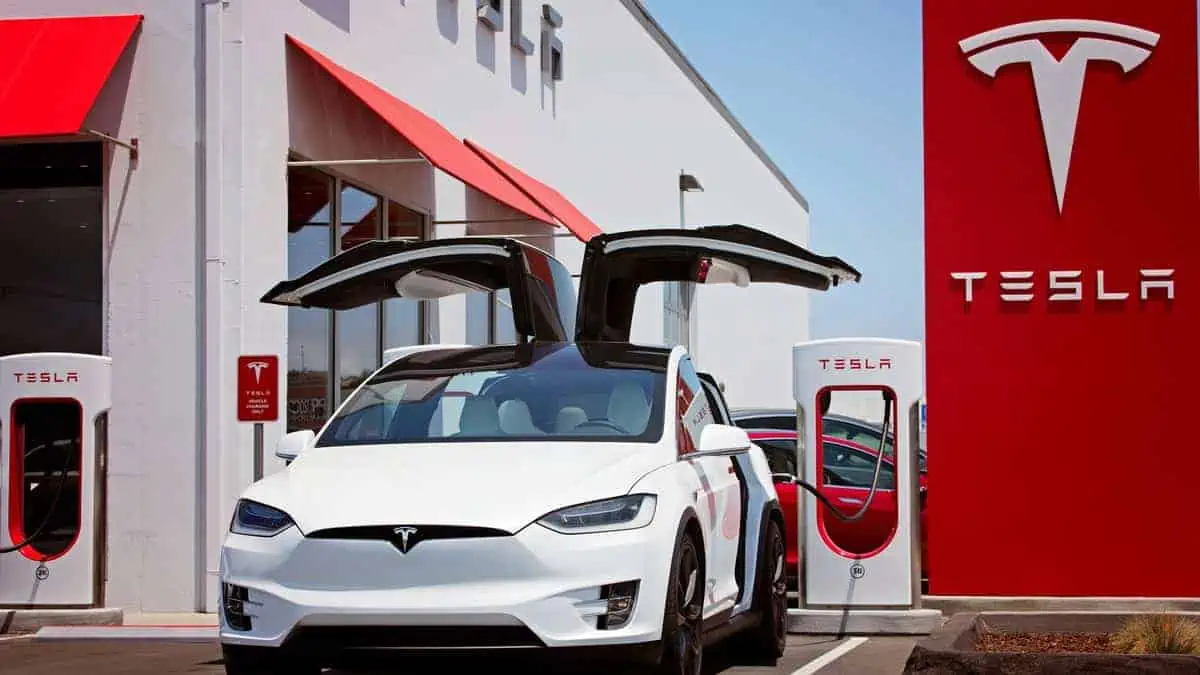Tesla seeks to defend its dominant position in the electric vehicle industry against Chinese rivals with its long-promised $25,000 electric car offering, according to Bloomberg. However, the Musk-led company needs to revamp a 100-year-old assembly line Henry Ford introduced in the carmaking world.
Tesla’s “unboxed” production strategy
Tesla claims to have developed an innovative electric vehicle manufacturing process, which it calls an “unboxed” strategy. Compared to the Henry Ford-pioneered process, Tesla’s strategy enables the company to work on individual car parts simultaneously in designated areas and efficiently put them all together for final assembly.
For context, the traditional process entails assembling the car on a single frame, painting the body, adding components, and moving the entire unit along a linear conveyor belt.
Tesla claims that this innovation could aid the company in cutting production footprints by over 40%. As a result, it can develop new electric vehicle factories that are way faster and cheaper.
With these benefits, Tesla claims that the new manufacturing process can halve production costs. It will help Tesla to develop and offer a mass-market EV to stimulate demand amid the major market challenges affecting its sales and stock price.
Traditional assembly line (Ford’s legacy) vs. Untested method (Tesla’s unboxed approach)
| Feature | Ford’s Legacy (Traditional Assembly Line) | Untested Method (Tesla’s Unboxed Approach) |
| Process | Assemble car on a frame, paint entire car, add components | Work on separate car parts simultaneously, paint individual panels, final assembly |
| Advantages | Established, proven method | Potentially lower costs (reduced paint shop investment), faster production (paint only used panels) |
| Disadvantages | Less efficient (moving large car body), higher energy consumption (painting entire car), limited worker access | Unproven, risk of production delays during implementation |
| Key Focus | Efficiency through established methods | Innovation and potential cost savings |
| Example | Traditional car manufacturing | Tesla’s Model Y “gigacasting” large sections of the car instead of using many smaller parts. |
$25k Tesla car production plans
In hindsight, Tesla boss Elon Musk omitted to share more specific information about the $25,000 electric car development during the latest earnings call in January.
CEO Musk only disclosed that the American electric vehicle giant was still “very far along” on developing a mass-market electric car model, which is set to kick off production at the end of 2025.
The American billionaire also teased that the new “revolutionary manufacturing system” is “far more advanced than any automotive manufacturing system in the world, by a significant margin,” without elaborating on his claims.
However, several Wall Street analysts doubt Tesla’s capability to meet CEO Musk’s already-delayed deadline for the $25,000 EV he teased in 2020. These skepticisms are unsurprising, given that the “unboxed” process is still unproven in the real-world application.
In addition, a recent Bloomberg Intelligence analysis estimated that Tesla’s new production method would lower costs by 33% compared to Tesla’s 50% claim.
Tesla’s ability to adopt innovative and cheaper production techniques gives it an edge over legacy automakers. For instance, the Musk-led company’s factories are newer than most in the industry. Some Tesla factories are not even under development yet. Therefore, these facilities can quickly and cheaply adopt new manufacturing strategies to cut costs.






